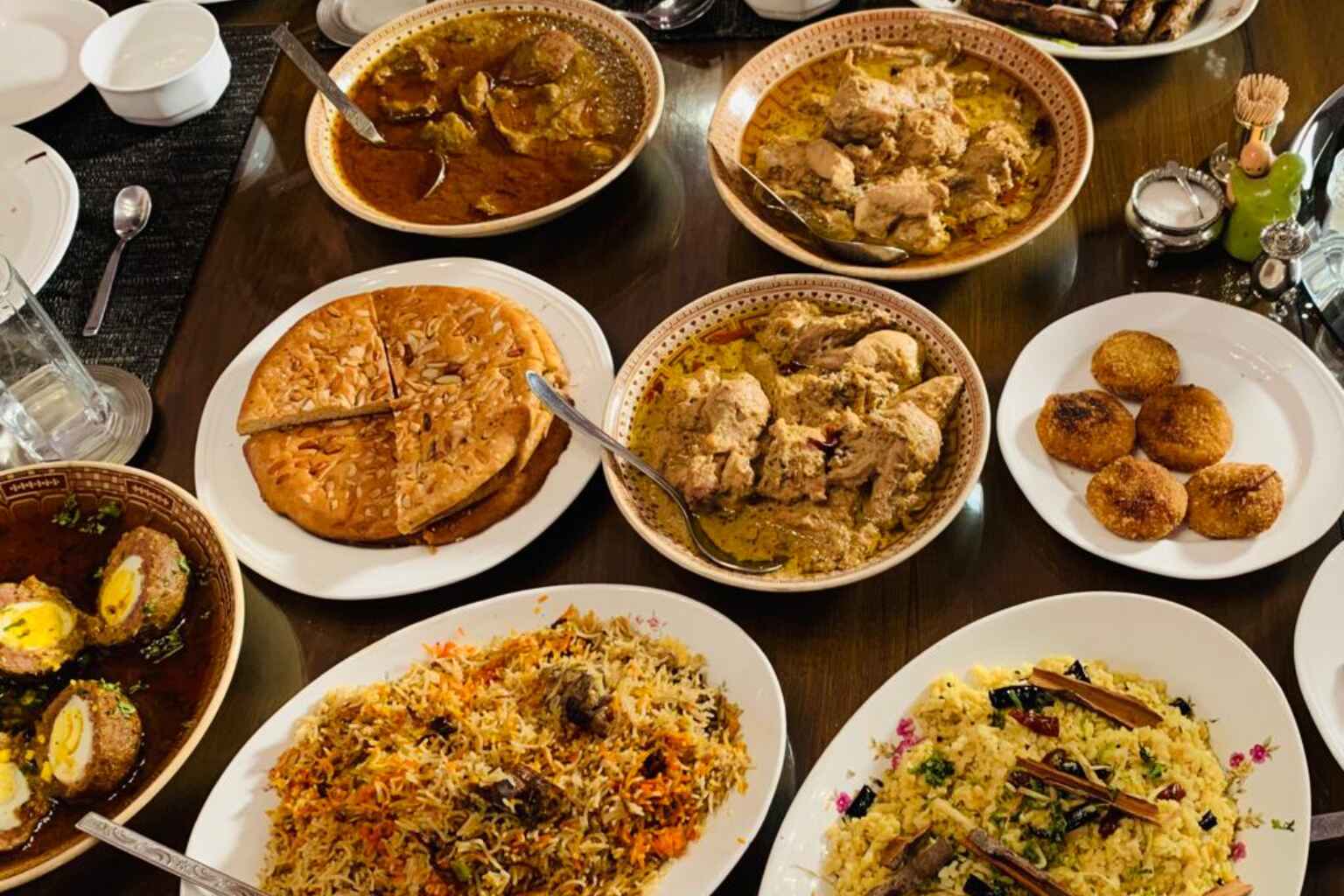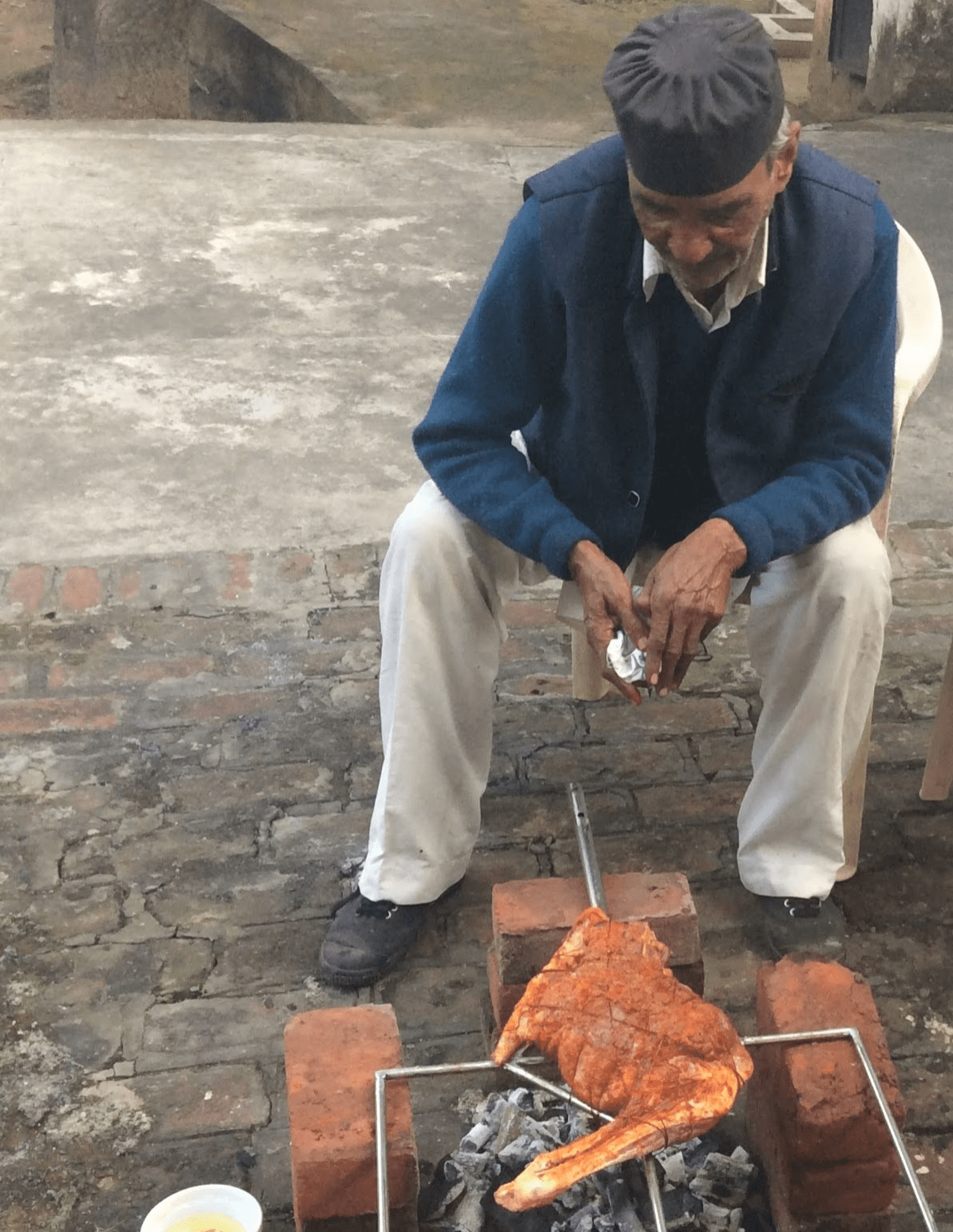Rampur Cuisine
About Rampur

Rampur was a Rohilla Pathan princely state established under British colonial rule in 1774. The Nawabs of Rampur were well-read and far-sighted rulers who set to fashioning a culturally accomplished state, absorbing various cultures of the region. Rampur survived the destruction of the Revolt of 1857 and became a cultural node of north Indian Muslim culture in the nineteenth century. Thus musicians, poets, writers, singers, dancers, and cooks found generous sponsorship from the Rampur state and were able to practice their art here. As Rampur Nawabs were gourmands, they specially created an atmosphere where the chefs and sous chefs from Delhi and Awadh collaborated with Rampur khansamas to create and present a new haute cuisine. Thus, the Rampur cuisine which was created and honed by the Nawabs was an amalgamation of Afghani, Mughal, Awadhi, and Kashmiri cuisines.





Rampuri Dastarkhwan
The Nawabs of Rampur like Nawab Sayed Hamid Ali Khan (ruled 1894-1930) and his successor Nawab Sayed Raza Ali Khan (ruled 1930-1949) took Rampuri cuisine to gastronomical heights. In her memoir Remembrance of Days Past, Begum Jahanara Habibulla, sister-in-law of Nawab Raza Ali Khan, writes of the grand repertoire of dishes that graced the royal tables–– shabdegh (meat and turnip curry), dumpukht pulao (pulao with whole chicken or quail), urus e behri (fish), dar e bahisht (sweetmeat), muzaffar (sewain and saffron sweet) and naan e santara (orange cake).
The Royal Kitchens and the Khansamas
A hundred and fifty khansamas were employed in the royal kitchens at the time of Nawab Hamid Ali Khan, each specializing in only one dish. Oral history says that unique ingredients like lotus seeds, banana flowers, rose leaves, khus roots and sandalwood were used to give the dishes a unique flavor. A grand vegetarian fare–– like kathal ke seekh kabab, kele ka kebab, alu ke kebab, sabz pulao ––was innovated in the royal kitchens. The halwas and sweetmeats of Rampur cuisine were also exceptional––safeda (sweet rice), pineapple pulao, adrak halwa, sohan halwa, and even the unimaginable gosht (meat) halwa. The master innovators behind all these dishes were the khansamas employed in the royal kitchens.


About Khansamas
The legendary khansamas of the royal kitchens cooked the grandiose cuisine till the 1960s. After the abolition of privy purses, the lack of sponsors and unemployment hit the vulnerable khansamas. Cooking was no longer a lucrative profession and the khansamas did not pass down their culinary skills to their offspring; in the absence of cookbooks, most of the gains of this painstakingly developed cuisine were forgotten.